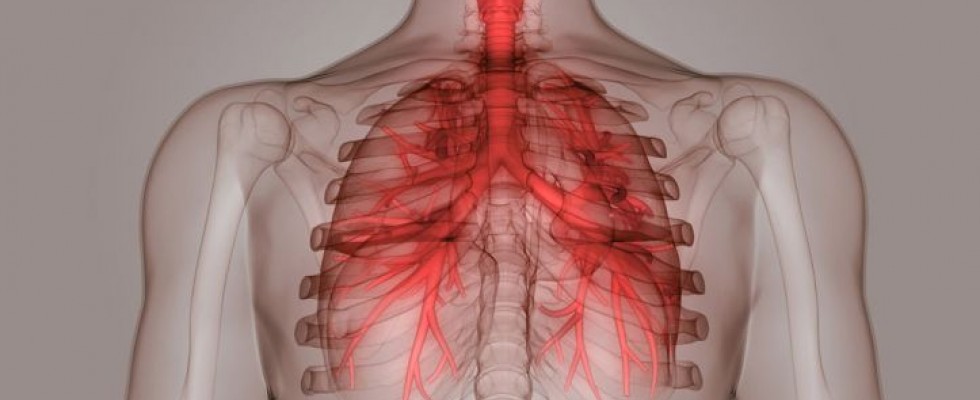
Chronic lower respiratory diseases, such as chronic obstructive pulmonary disease (COPD), are the third leading disease-related cause of death behind heart disease and cancer. With 16 million people in the United States diagnosed with COPD, it’s no surprise that homecare professionals often help patients with chronic respiratory disease after they are discharged from the hospital. COPD exacerbations can last weeks, yet patients hospitalized with exacerbations are typically discharged from the hospital after just a few days.
At discharge, the patient may feel overwhelmed and like the sickest person in the world. In some ways, this can be true, since the transition of medical care from the hospital to the home may not be efficient and—due to the severity of COPD and its frequent comorbidities—about 20 percent of patients are readmitted to the hospital within 30 days.
Outpatient, hospital-based pulmonary rehabilitation—with its components of collaborative self-management and exercise training—is a proven treatment for individuals with COPD, reducing symptoms and enhancing quality of life. For post-discharge COPD patients, it can reduce subsequent health care utilization and mortality risk.
Despite its benefits and the fact that it is usually covered by both Medicare and private insurance, pulmonary rehabilitation remains underutilized. For example, a recent study published in the Annals of the American Thoracic Society found that only 1.9 percent of patients hospitalized for COPD received pulmonary rehabilitation within six months of being discharged from the hospital.
To help shed light on why so few patients are taking advantage of pulmonary rehabilitation, the American Thoracic Society commissioned a survey of 500 people diagnosed with a chronic pulmonary disorder, conducted by market research firm Wakefield Research. The survey revealed an alarmingly large knowledge gap: 62 percent of respondents had never heard of pulmonary rehabilitation as treatment for their disease, even though the treatment it is considered standard of care.
Complement to Standard Therapy
Patients trust their homecare providers and want to know they have their best interests in mind, so it’s important to motivate patients to take control of their health. Homecare providers should encourage their patients to explore effective treatments such as pulmonary rehabilitation and assess whether it is right for them. Homecare providers should stress to their patients that pulmonary rehabilitation is not an alternative form of therapy for COPD; rather, it complements standard therapy such as bronchodilators.
For patients, the idea of leaving the house two to three times a week to participate in exercise may seem a bit counterintuitive. However, pulmonary rehabilitation is safe and effective. It is a comprehensive six- to 12-week program that comprises education—such as teaching breathing techniques, guidelines on taking medications effectively and recognizing when to call the doctor—and gentle, supervised exercise designed to strengthen muscles and ease the burden on lungs. When utilized with medical therapy, pulmonary rehabilitation can improve activity tolerance and exercise capacity, helping patients get back to doing the things that they need and want to do every day.
The survey from the American Thoracic Society also highlighted the daily challenges that people with chronic respiratory diseases experience. More than half of respondents revealed that they avoid climbing stairs due to their breathing problems, while half admitted they do not carry items when they walk. Nearly half avoid household chores such as doing laundry or cleaning. These diseases also impact social life: 42 percent of respondents avoid leaving home to attend social events, and over one-third said they avoid entertaining their families.
Tailored Therapy
However, it does not have to be this way. Pulmonary rehabilitation helps patients with chronic respiratory disease get their lives back. Therapy is tailored to the individual and what that person is capable of doing, assuring each patient makes progress at a sensible pace. Pulmonary rehabilitation also helps build a sense of self-efficacy, morale and a sense of community, as chronic respiratory diseases can be isolating. While taking part in the program, patients participate with others who are experiencing similar challenges and learn to address and overcome these issues together.
If you have a patient with COPD who experiences symptoms such as shortness of breath, that individual could be a fit for pulmonary rehabilitation. Additionally, a good candidate may be taking medications such as maintenance inhalers or oral steroids but feels the drugs are not helping as much as they could. Since medication and pulmonary rehabilitation are not competing treatments, combining them may help a patient advance to the next level of wellness. Talk to your patient about the benefits of pulmonary rehabilitation and how it could help improve quality of life.
People experiencing symptoms related to chronic respiratory disease may need extra reassurance that they will be able to handle a program that incorporates movement, no matter how gentle. Homecare professionals are in a unique position to help patients see what they could be capable of doing by assisting with walks and stretching exercises around the house. Try empowering them further by going outside for fresh air, proving that leaving the house to attend a pulmonary rehabilitation program may not be as a big a reach as believed. Additionally, explaining to your patient they will be in the company of others with similar medical problems and that their participation will be strictly monitored by experienced professionals should help.
While a patient may feel their world is dark after being discharged from the hospital after an exacerbation caused by chronic respiratory disease, you can help show them that there are brighter days ahead.
